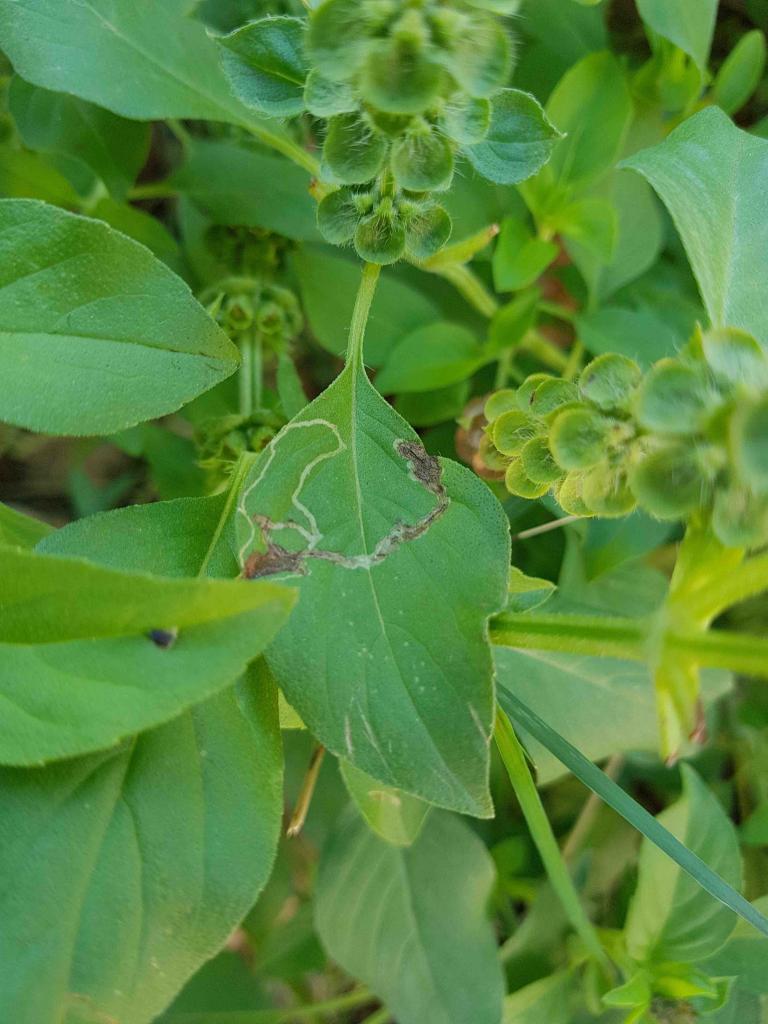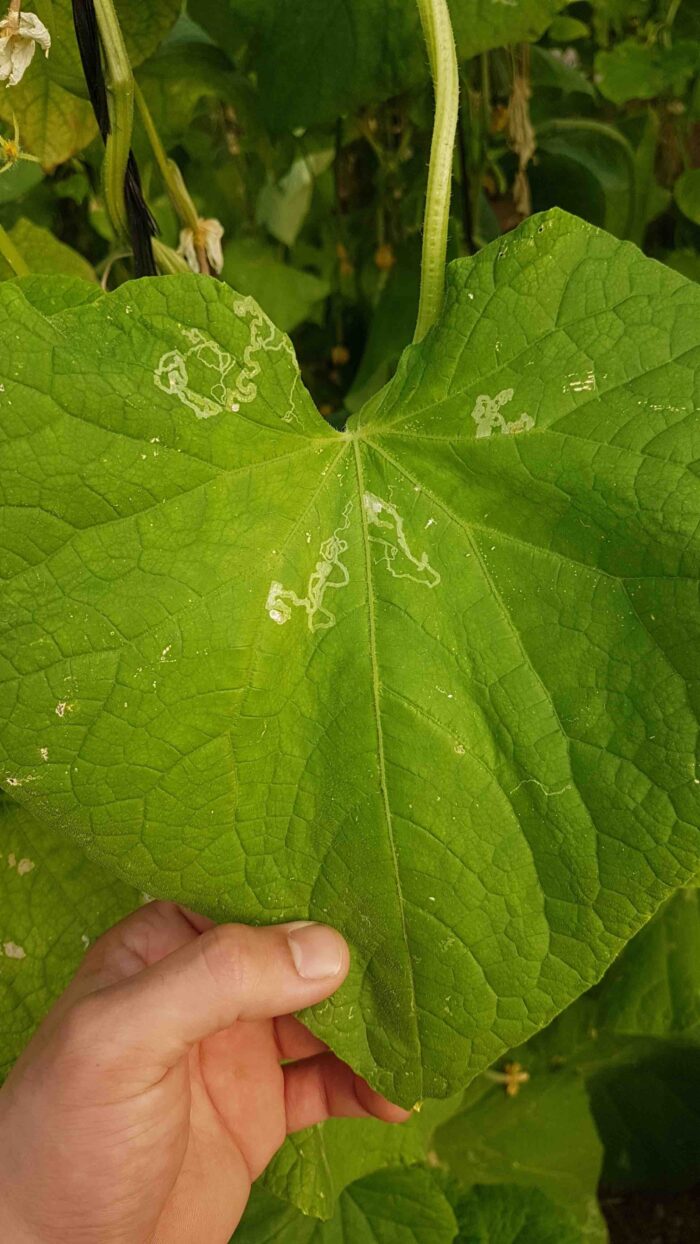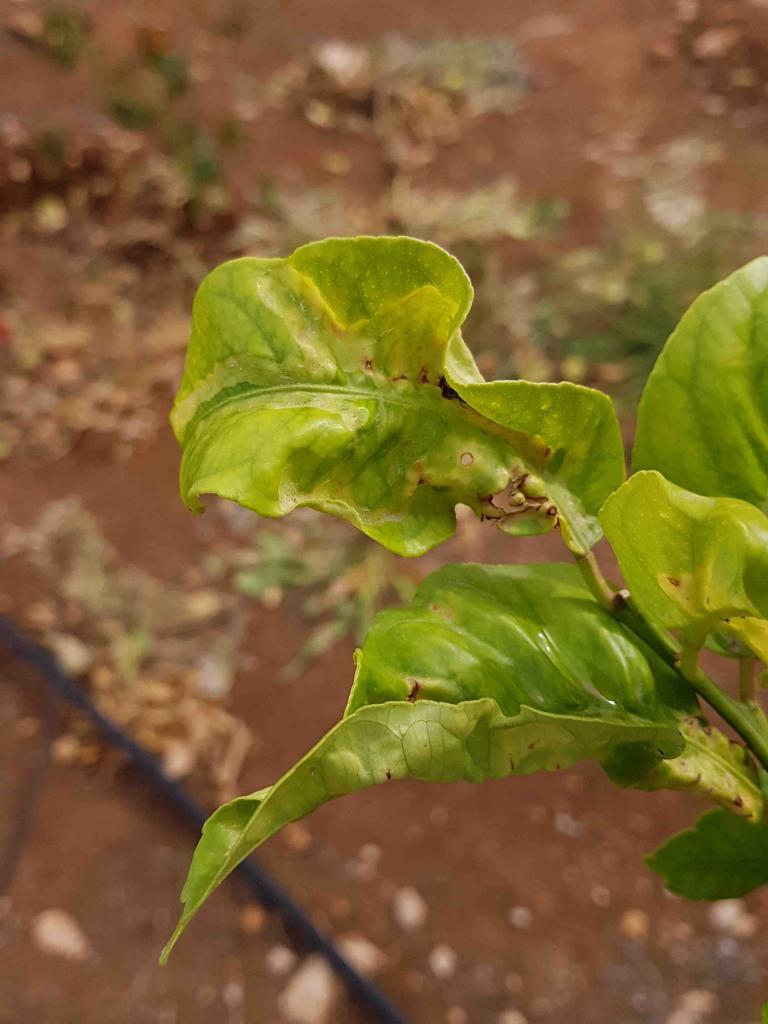Sâu đục lá
Wide range of ornamental and cultural crops: cucumber, basil, mint, parsley and other fresh herbs, tomato, citrus, eggplant, bean, pea, watermelon, melon and other cucurbitaceae members, decorative flowers like chrysanthemum and roses
Leafminers are insects belonging to different orders: sawflies belong to hymenoptora, flies belong to the order of diptera, and moths that belong to the order lepidoptera. Together, they form a large group of plant pests that are important to cultural crops around the world. Standing out are three flies species: liriomyza trifolii, liriomyza nuidobrensis, and liriomyza bryoniae. Another famous member of the group, but perhaps less intimidating, is the citrus leafminer (phyllocnistis citrilla.)
Feeding patterns are important in helping identify the genus and the species, and it is quiet characteristic. Leafminers are year-long pests that favors warm environments.
The first signs of infestation are tiny yellow dots upon leaves upper surfaces. The spots depict where the female laid her eggs. A week after, maggots begin eating their way inside the leaf tissue thus creating those complex tunnels we recognize so easily. The tunnel provides sufficient living conditions for the larvae. In the following 10 days, the tunnel gets wider and longer. Eventually maggots pop out and fall to the ground where they’ll complete their metamorphosis and turn into a fly after another 10 days.
It’s larvae stage is the one responsible for the actual damage. In a large enough population, it can cause a significant drop in yields due to sabotaging photosynthesis. Another form of damage occurs when the beauty of ornamental plants is ruined or when the look of fresh herbs is degraded, thus making it hard for growers to market them.
Phát triển Kết cấu Bên trong: Giữ cho kết cấu khép kín và lưới không có lỗ.
Thời gian: Việc khắc phục sự phá hoại của sâu bệnh trong những giai đoạn đầu thường dễ dàng hơn và tiết kiệm hơn. Thường xuyên theo dõi đồng ruộng và tìm kiếm các dấu hiệu trên.
Hiệu quả của thuốc trừ sâu phụ thuộc rất nhiều vào loại sâu ăn lá.
Các sản phẩm được sử dụng ở một hoặc nhiều nơi trên thế giới có thể chứa các thành phần sau:
Đối với sâu ăn lá trên nhóm cây có múi (Citrus Leafminer): imidacloprid, abamectin và acetamiprid được sử dụng rộng rãi.
Đối với Rau: Các sản phẩm có gốc từ cyromazine, thiocyclam hydrogen oxalate, milbemectin và chlorantraniliprole được xem là có hiệu quả.
Các sản phẩm có gốc từ Thuốc spinosad.
*Names marked in red are considered to be highly poisonous to beneficial insects.
*Names marked in green are considered to be organic and IPM (integrated pest management) compatible.
thư viện hình ảnh


